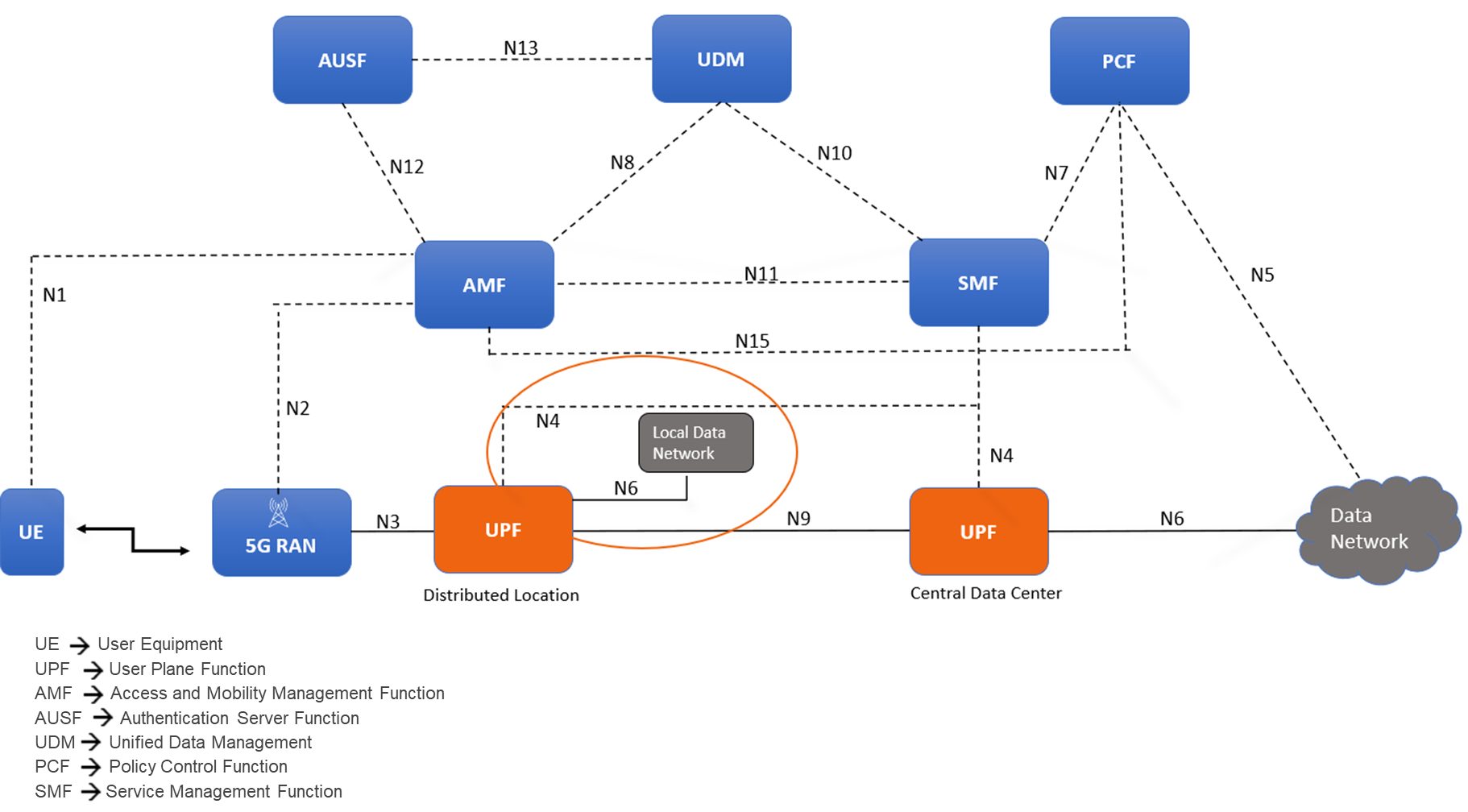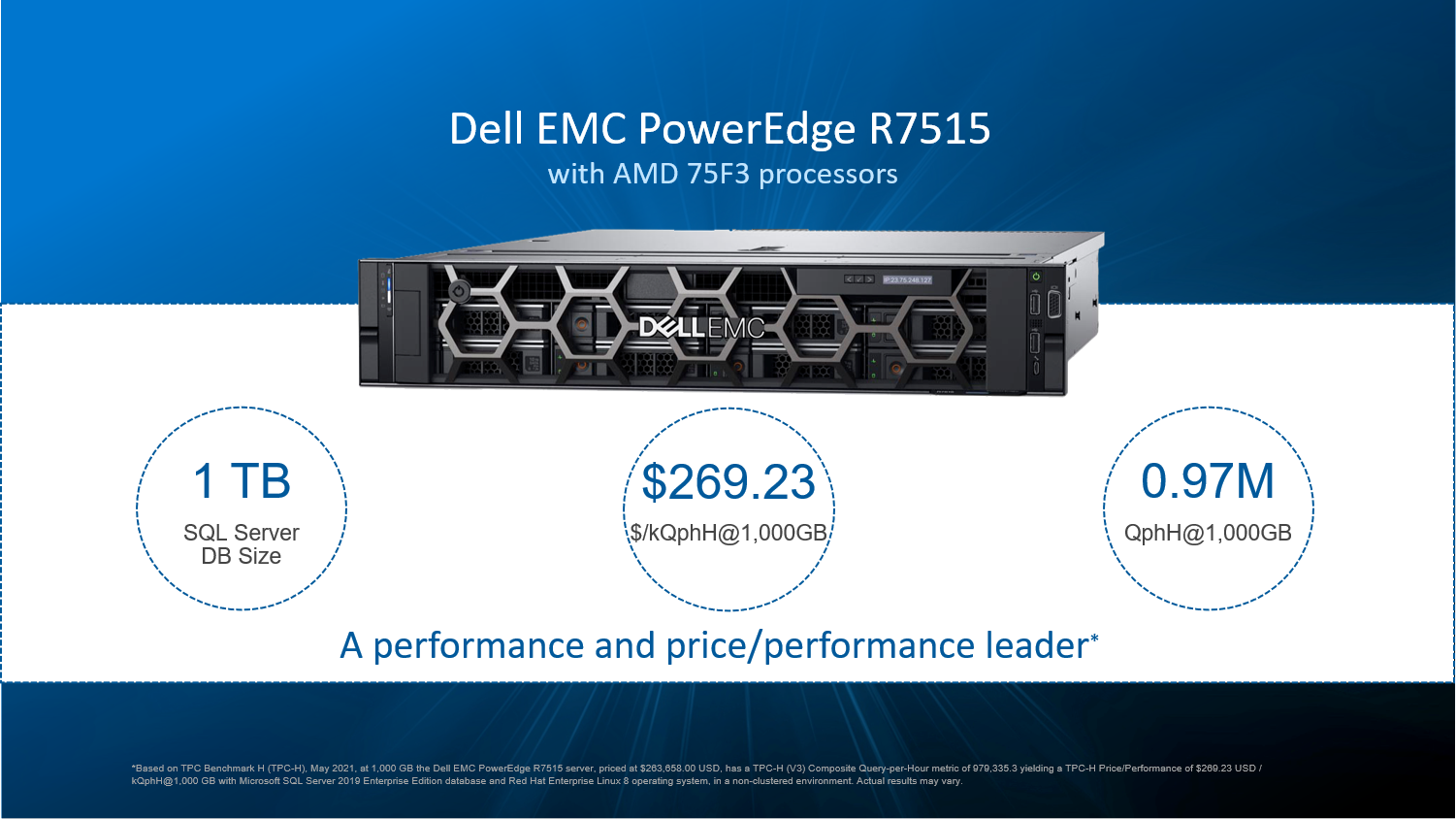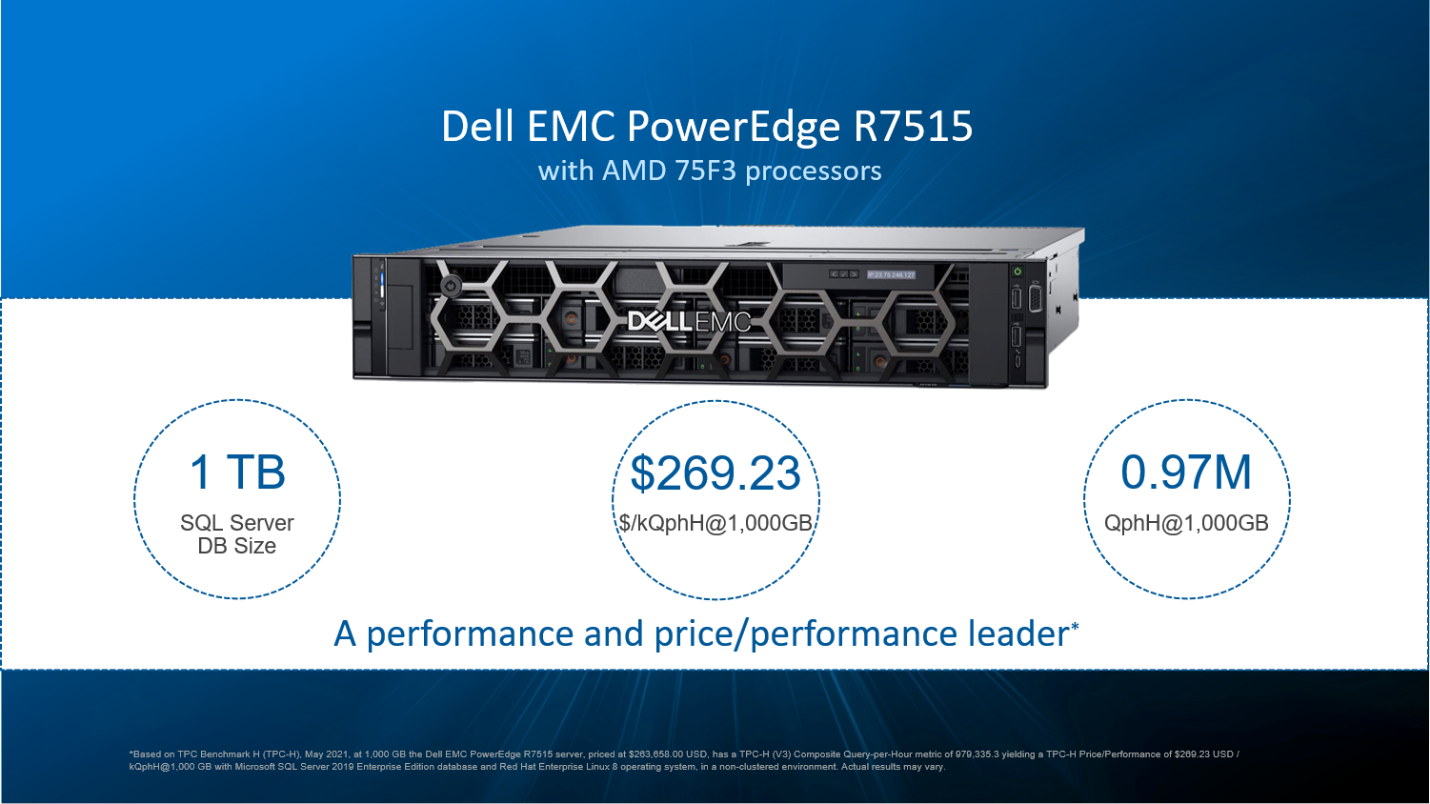Assets

Distribution of 5G Core to Network Edge
Mon, 06 May 2024 12:52:39 -0000
|Read Time: 0 minutes
Thus far in our blog series, we have discussed migrating to an open cloud-native ecosystem, the 5G Core and its architecture, and how Dell Telecom Infrastructure Block for Red Hat can help simplify 5G network deployment for Red Hat® OpenShift®. Now, we would like to introduce a key use case for distributing 5G core User Plane functions from the centralized data center to the network edge.
Distributing Core Functions in 5G networks
The evolution of communication technology has brought us to the era of 5G networks, promising faster speeds, lower latency, and the ability to connect billions of devices simultaneously. However, to achieve these ambitious goals, the architecture of 5G networks needs to be more flexible, scalable, and efficient than ever before. With the advent of CUPS, or Control and User Plane Separation, in later LTE releases, the telecommunications industry had high expectations for a prototypical distributed control-user plane architecture. This development was seen as a steppingstone towards the more advanced 5G networks that were on the horizon. CUPS aimed to separate the control plane and user plane functionalities where the Control Plane (specifically the Session Management Function or SMF) is typically centralized while the User Plane Function (UPF) can be located alongside the Control Plane or distributed to other locations in the network as demanded by specific use cases.
Understanding the need for Distributed UPF
The UPF is a key component in 5G networks, responsible for handling user data traffic. Distributed User Plane Function (D-UPF) is an advanced network architecture that distributes the UPF functionality across multiple nodes closer to the user and enables local breakout (LBO) to manage use cases that requires lower latency or more privacy, enabling a more scalable and flexible networking environment. With D-UPF, operators can handle increasing data volumes, reduce latency, and enhance overall network performance. By distributing the UPF, operators can effectively manage the increasing data demands across different consumer and enterprise use cases in a cost-effective manner.

Figure 1: Distributed User Plane function in 5G Core Architecture
D-UPF also plays a crucial role in enabling edge computing in 5G networks. By distributing the user plane traffic closer to the network edge, D-UPF reduces the latency associated with data transmission to and from centralized data centers. This opens opportunities for real-time applications, such as autonomous vehicles, augmented reality, and industrial automation, where low latency is critical for their proper functioning.
Distributed UPF deployment options

Figure 2: D-UPF deployment and functionality
The above diagram provides an overview of the different roles D-UPF may play in a 5G architecture. For example:
- Centralized UPF/PSA-UPF: In the simplest scenario, the UPF is centralized and session anchor occurs within the data center and takes care of the long-term stable IP address assignment. One such example includes VoLTE / NR call where PDU Session Anchor (PSA)-UPF traffic steers to IMS.
- Intermediate UPF (I-UPF):An intermediate UPF (I-UPF) can be inserted on the User Plane path between the RAN and a PSA. Here are two possible reasons to do that:
- If due to mobility, the UE moves to a new RAN node and the new RAN node cannot support N3 tunnel to the old PSA, then an I-UPF is inserted and this I-UPF will have the N3 interface towards RAN and an N9 interface towards the PSA UPF. This process of linking multiple UPFs is called UPF chaining, which involves directing user data flows through a series of UPFs, each of which is performing specific functions.
- You might want to deploy UPF within the Local Data Center/Edge for a low latency use case to steer data traffic to a co-deployed MEC for edge services or to break-out traffic to the local data network.
Challenges and considerations for D-UPF deployments
Now that we have reviewed the need for D-UPF and the different deployment scenarios, let’s consider some of the obstacles you will encounter along the way. As we all know, these network functions have their own needs, especially when it comes to the amount of data being inspected, routed, and forwarded across from the core to the edge, and back again. Below are four areas for consideration:
- Resource Constraints: Edge or remote locations often have limited physical space available for deploying network equipment. The challenge lies in accommodating the necessary hardware, cooling systems, and other infrastructure within these space-constrained environments. Remote locations may also have limited or unreliable power supply infrastructure. Opting for infrastructure with optimal power efficiency, high density, serviceability, ruggedized exterior, and optimized for edge form factors becomes important as UPFs are extended to the edge.
- Performance Requirements: The need for low latency Infrastructure is critical to ensure real-time responsiveness and a seamless user experience when deploying core functions to the edge. Also, by processing data at the network edge with minimal latency, the need for large bandwidth networks to transmit data to centralized core is reduced. This helps in optimizing network bandwidth and lowering the operating costs. This ultimately reduces the CSP’s reliance on centralized core infrastructure for time-sensitive operations.
- Orchestration and Automation: Deploying and managing UPFs distributed across edge locations is a complex challenge. This includes tasks such as workload placement, resource allocation, and automated management of edge infrastructure. Choosing a horizontal telco cloud platform that supports automated distributed core deployment and provides the capability to expand and scale the compute and storage resources to accommodate the varying demands at the edge is a must.
- Lifecycle Management and Operating Cost: Another significant factor is the increased costs associated with first deploying and then operating remote deployments. The large number of these locations coupled with their limited accessibility makes them more expensive to construct and maintain. To address this, zero-touch provisioning at network setup k and sustainable lifecycle management are necessary to optimize the economics of the edge.
The Horizontal Cloud Platform: Dell Telecom Infrastructure Blocks

Figure3: An Implementation View of Dell Telecom Infrastructure Blocks for Red Hat running the UPF
Dell Technologies is at the forefront of providing cutting-edge cloud-native solutions for the 5G telecom industry. As discussed in our previous blog, Telecom Infrastructure Blocks for Red Hat is one of those solutions, helping operators break down technology silos and empowering them to deploy a common cloud platform from Core to Edge to RAN. These are engineered systems, based on high-performance telecom edge-optimized Dell PowerEdge servers, that have been pre-validated and integrated with Red Hat OpenShift ecosystem software. This makes them a perfect solution for tackling the D-UPF challenges outlined in this blog.
- Resource Constraints:
- Space-efficient modular designed server options for telecom environments, such as the Dell PowerEdge XR8000 series servers, allow providers to mix and match components based on workload needs. They can run multiple workloads, such as CU/DU and UPF in the same chassis.
- Smart cooling designs support harsh edge environments and keep systems at optimal temperatures without using more energy than is needed.[1]
- Rugged and flexible server options that are less than half the length of traditional servers and offer front or rear connectivity make installation in small enclosures at the base of cell towers easier.[2]
- Performance Requirements:
- Orchestration and Automation:
- Horizontal cloud stack engineered platform based on Red Hat OpenShift allows operators to pool resources to meet changing workload requirements. This is achieved by automating server discovery, creating and maintaining a server inventory, and adding the ability to configure and reconfigure the full hardware and software stack to meet evolving workload requirements.
- Servers leverage dynamic resource allocation to ensure that computing resources are allocated precisely where and when they are needed. This real-time optimization minimizes resource waste and maximizes network efficiency.[3]
- Lifecycle Management and Operating Cost:
- Include Dell Telecom Infrastructure Automation software to automate the deployment and life-cycle management as its fundamental components.
- Backed by a unified support model from Dell with options that meet carrier grade SLAs, CSPs do not have to worry about multi-vendor management for the cloud infrastructure support (for both the hardware and cloud platform software), as Dell becomes the single point of contact in the support of telco cloud platform and works with its partners to resolve issues.
Summary
In summary, the need for D-UPF in 5G networks arises from the requirements of handling massive data volumes, improving network efficiency, reducing latency, enabling edge computing, and supporting advanced 5G services. Selecting among the different deployment scenarios possible will require ensuring you have an infrastructure capable of meeting your changing objectives for today and the flexibility and scalability to see you through your long-term goals. For example, you can host and support the deployment and management of content delivery network (CDN) at the network edge, where Dell Telecom Infrastructure Blocks for Red Hat can also serve as a telco cloud building block. By implementing this engineered telco cloud platform solution from Dell, we believe CSPs will be able to streamline the process and reduce costs associated with the deployment and maintenance of UPF across edge locations.
To learn more about Telecom Infrastructure Blocks for Red Hat, visit our website Dell Telecom Multicloud Foundation solutions.
[1] Source: ACG Report, “The TCO Benefits of Dell’s Next-Generation Telco Servers“, February 2023
[2] Source: Dell Technologies, “Introducing New Dell OEM PowerEdge XR Servers“, March 2023
[3] Source: Dell Technologies, “Competing in the new world of Open RAN in Telecom”, February 2024

SQL Server Modernization: 7X Performance Gains, 5.25X Faster Rebuilds
Tue, 26 Oct 2021 09:51:41 -0000
|Read Time: 0 minutes
Upgrading to the latest server generation significantly improves performance and data protection
When it comes time to modernize with Microsoft® SQL Server 2019® to take advantage of its significant advancements for extracting real-time insights from data-intensive workloads, it makes sense to consider an upgrade to the underlying hardware as well.
The latest generation of Dell EMC PowerEdge servers can help SQL Server transform raw data into actionable insights with better performance and data protection. These servers are highly adaptable for seamless scaling and equipped to meet the demands of real-time analytics, artificial intelligence (AI) and machine learning (ML).
To help you put some numbers around your infrastructure decision, Dell Technologies recently asked a third-party consulting firm, Prowess Consulting, to test SQL Server performance on the latest generation of Dell EMC PowerEdge servers, compared to the previous generation.
The testing demonstrates that the latest server generation with RAID storage based on the latest NVMe™ drives can significantly improve SQL Server 2019 performance, capable of processing more than 7X more new orders per minute (NOPM).[1] In addition, RAID array rebuild times were up to 5.25X faster on the newer platform, enabling significantly faster recovery and less downtime.1

These remarkable improvements in performance and data protection are driven by a variety of new technologies incorporated in PowerEdge servers:
- Latest processors with higher core counts: Compared to the previous generation, 3rd Generation Intel® Xeon® Scalable processors are built on a more efficient architecture that increases core performance, memory, and I/O bandwidth and provides additional memory channels to accelerate workloads. In addition, it supports more cores and sockets to further enhance performance and throughput.
- More and faster memory: The 3rd Generation Intel Xeon Scalable processors offer more cores and supports more memory modules (DIMMs) at the same price, for up to 1.60X higher memory bandwidth1 and up to 2.66X higher memory capacity.1
- NVMe™ drives with PCIe® Gen4: Compared to the SATA RAID drives with PCIe Gen3 used previously, the latest generation of NVMe solid-state drives paired with PCIe Gen4 interfaces doubles server throughput.1
- Revolutionary RAID controller technology: The new Dell PERC H755N front NVMe adapter is based on the Broadcom® SAS3916 PCIe to SAS/SATA/PCIe RAID on Chip (RoC) controller. These are the first RAID controllers from Dell Technologies to offer both PCIe Gen4 host and PCIe Gen4 storage interfaces, which deliver double the bandwidth and 75% more IOPS compared to previous generations.1
- Ethernet controllers: The Broadcom NetXtreme® E-Series P425G 4x 25G PCIe NIC combines a high-bandwidth Ethernet controller with a unique set of highly optimized hardware-acceleration engines to enhance network performance and improve server efficiency for enterprise and cloud-scale networking and storage applications, including AI, ML, and data analytics.
Taken together, these modern features deliver a significant SQL Server performance boost with higher-capacity storage and faster database rebuild times. They also greatly increase IT efficiency, a topic we’ll look at in more detail in the next blog.
Learn more
Read the report: Can Newer Dell EMC Servers Offer Significantly Better Performance for Microsoft SQL Server?
Visit: DellTechnologies.com/Microsoft-Data-Platform
Visit: DellTechnologies.com/PowerEdge
[1] Dell EMC R750 server compared with similarly-configured Dell EMC PowerEdge R740xd server. Source: Prowess white paper, sponsored by Dell Technologies, “Can Newer Dell EMC Servers Offer Significantly Better Performance for Microsoft SQL Server?” August 2021. Actual results may vary.

Microsoft SQL Server 2019 TPC-H Performance on Dell EMC PowerEdge R7515
Mon, 14 Jun 2021 14:44:40 -0000
|Read Time: 0 minutes
Dell EMC PowerEdge R7515 servers with AMD 75F3 processors deliver impressive performance and price/performance for SQL Server 2019.
While modernizing your data center there are two very important considerations every organization must make. The first is the price of new hardware and the other is how will it perform.
The latest powerful AMD 75F3 processors change the economics of the datacenter for the better. The Dell EMC PowerEdge R7515(2U) server, with the AMD processors, delivers the balanced I/O, memory, and computing capacity needed for large-scale analytical and business intelligence applications.
The latest generation PowerEdge R7515 servers mean organizations will not have to compromise neither on performance nor cost and instead focus on realizing their IT and digital business potentials. Independent tpc.org auditing has demonstrated that these servers are top rated in performance and price/performance for @ 1,000GB scale factor Microsoft SQL Server 2019 Enterprise database with Red Hat Enterprise Linux 8 operating system in a non-clustered environment.[1] Powered by 3rd generation AMD® EPYC™ processors, these servers are capable of handling demanding workloads and applications, such as data warehouses, ecommerce, databases. For more details about Dell servers please visit the Dell website.

Results (Source: Tpc.org as of May 03,2021)
The Dell PowerEdge R7515 server achieved a result of 9,79,335.3 QphH@1000GB and $269.23 $/kQphH@1000GB and with system availability as of Apr 29, 2021. Results were officially published on the TPC org website on May 3,2021. *[2]
Check out the TPC-H V3 Result Highlights for additional information on the benchmark configuration. The detailed official benchmark disclosure report at TPC Results Page.
AMD EPYC 75F3 Processor:
The AMD EPYC™ 7003 Series Processors are built with leading-edge Zen 3 core, and AMD Infinity Architecture. The AMD EPYC™ SoC offers a consistent set of features across 8 to 64 cores. Each 3rd Gen AMD EPYC processor consists of up to eight Core Complex Die CCD) and an I/O Die (IOD).
Benchmarking SQL Server 2019 with Dell EMC PowerEdge R7515 Server:
Microsoft SQL Server was configured on PowerEdge R7515 server with the following configuration. The PowerEdge R7515 server was equipped with single EPYC 75F3 3.3GHz, 32C/64T, 256M Cache (280W) DDR4-3200 and 1 TB of memory (up to 2 TB supported). Storage for this system was eight 1.6TB NVME Gen3 Mixed use Express Flash Drives plus four 480GB SSD SAS mixed use drives and three 480GB SATA read intensive SSD drives. The system ran Microsoft SQL Server 2019 Enterprise Edition and Red Hat Enterprise Linux 8. For technical information, see the R7515 rack server page for specifications, customizations, and details.
You can visit the FDR report for additional information on the benchmark configuration.
Performance:
The performance test consists of two runs:
A run consists of one execution of the Power test followed by one execution of the Throughput test.
RUN 1 is the first run following the load test. Run 2 is the run following Run 1. Below are the RUN1 and RUN2 results. For more detailed information please go through the FDR report.

Dell Technologies solutions for Microsoft SQL Server:
Dell Technologies solutions simplify the deployment, integration and management of Microsoft data platform environments and accelerate time-to-value for better service delivery and business innovation. With a broad infrastructure portfolio and a long-standing partnership with Microsoft, we provide the innovative solutions that reduce complexity and enable you to solve today’s challenges, no matter where you are in your transformation journey.
We have already released 10 TB TPC-H benchmarks on 4-S R940xa server. For More information about this the testing config and results please visit Dell EMC PowerEdge R940xa Full Disclosure Report.
In addition, Dell Technologies offers a portfolio of other rack servers, tower servers, and modular infrastructure that can be configured to accelerate most any business workload. For more details about Dell Technologies Solutions for Microsoft SQL please visit https://www.delltechnologies.com/sql
[1] *Based on TPC Benchmark H (TPC-H), May 2021, at 1,000 GB the Dell EMC PowerEdge R7515 server, priced at $263,658.00 USD, has a TPC-H (V3) Composite Query-per-Hour metric of 979,335.3 yielding a TPC-H Price/Performance of $269.23 USD / kQphH@1,000 GB with Microsoft SQL Server 2019 Enterprise Edition database and Red Hat Enterprise Linux 8 operating system, in a non-clustered environment. Actual results may vary. Full results on tpc.org.
[2] Based on TPC Benchmark H (TPC-H), May 2021, at 1,000 GB the Dell EMC PowerEdge R7515 server, priced at $263,658.00 USD, has a TPC-H (V3) Composite Query-per-Hour metric of 979,335.3 yielding a TPC-H Price/Performance of $269.23 USD / kQphH@1,000 GB with Microsoft SQL Server 2019 Enterprise Edition database and Red Hat Enterprise Linux 8 operating system, in a non-clustered environment. Actual results may vary. Full results on tpc.org.




